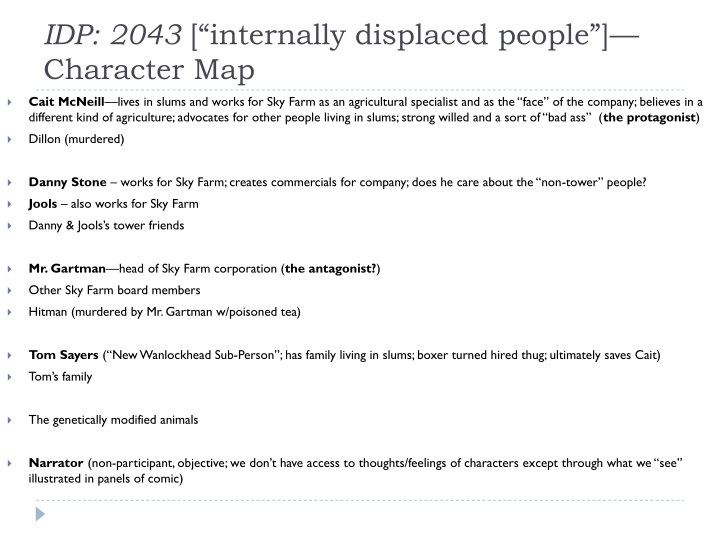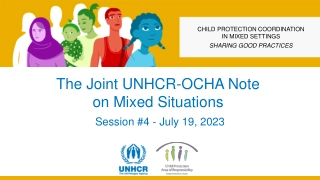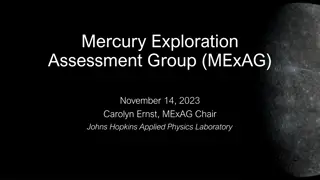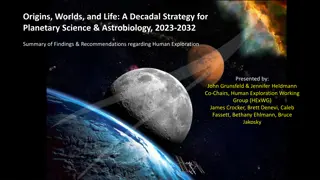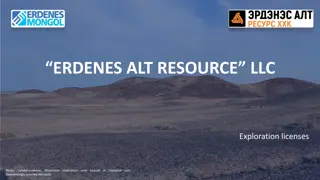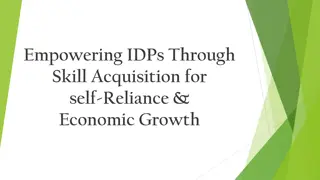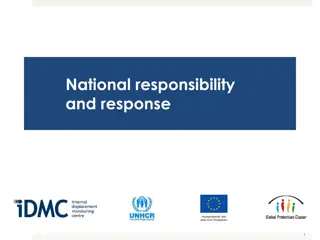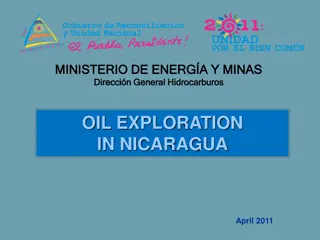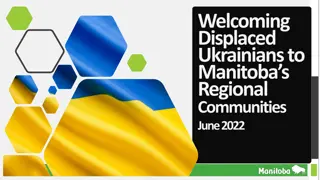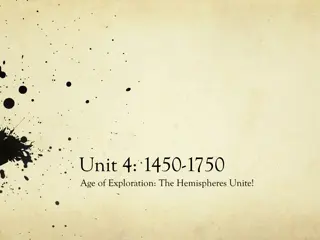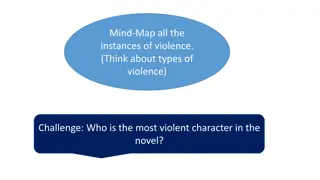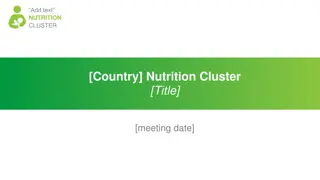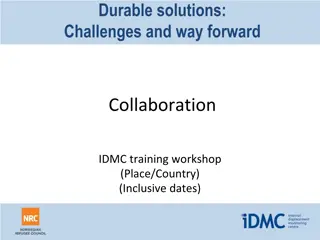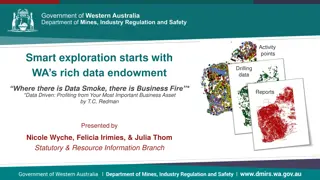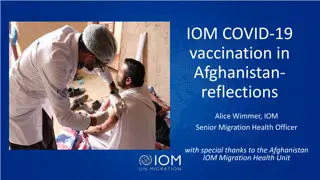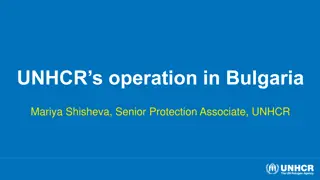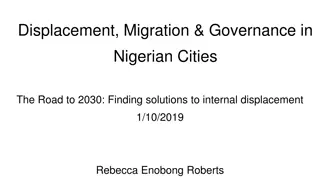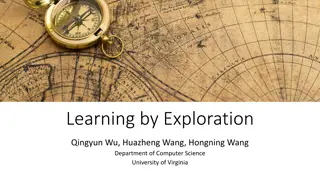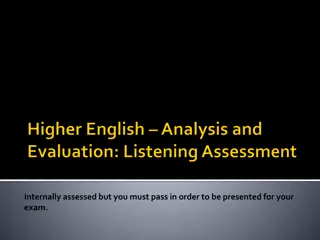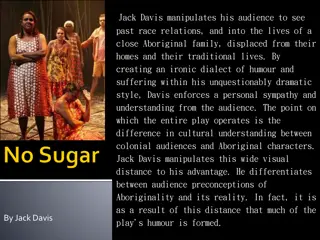Internally Displaced People: Characters and Future Exploration
In a graphic novel set in the year 2043, follow the lives of Cait McNeill, Danny Stone, and others as they navigate a world facing climate change and industrial agriculture. With themes of technology, ecology, and human nature, the story unfolds in a future where different ideologies clash and a dark outlook on survival prevails.
Uploaded on Feb 20, 2025 | 1 Views
Download Presentation

Please find below an Image/Link to download the presentation.
The content on the website is provided AS IS for your information and personal use only. It may not be sold, licensed, or shared on other websites without obtaining consent from the author.If you encounter any issues during the download, it is possible that the publisher has removed the file from their server.
You are allowed to download the files provided on this website for personal or commercial use, subject to the condition that they are used lawfully. All files are the property of their respective owners.
The content on the website is provided AS IS for your information and personal use only. It may not be sold, licensed, or shared on other websites without obtaining consent from the author.
E N D
Presentation Transcript
IDP: 2043 [internally displaced people] Character Map Cait McNeill lives in slums and works for Sky Farm as an agricultural specialist and as the face of the company; believes in a different kind of agriculture; advocates for other people living in slums; strong willed and a sort of bad ass (the protagonist) Dillon (murdered) Danny Stone works for Sky Farm; creates commercials for company; does he care about the non-tower people? Jools also works for Sky Farm Danny & Jools s tower friends Mr. Gartman head of Sky Farm corporation (the antagonist?) Other Sky Farm board members Hitman (murdered by Mr. Gartman w/poisoned tea) Tom Sayers ( New Wanlockhead Sub-Person ; has family living in slums; boxer turned hired thug; ultimately saves Cait) Tom s family The genetically modified animals Narrator (non-participant, objective; we don t have access to thoughts/feelings of characters except through what we see illustrated in panels of comic)
IDP: 2043 [internally displaced people] Structure Chapter 1: Introduced to Cait, Danny, Jools, Mr. Gartman; introduced to the multiple places in the narrative (diff. between slums and the towers); Mr. Gartman sends people to kill Cait (Dillon killed); doesn t seem to be much of a gov t of any kind corporation in charge Chapter 2: Introduced to Tom Sayers and get background on his life; we learn more about life in the slums & that the smallpox scare is a scam; we see the attempted murder of Cait from another perspective and learn how she was able to escape Chapter 3: Background on Danny, Jools, and Cait at the Sky Farm; we learn more about life in the tower; dinner party at the tower Chapter 4: Background on Mr. Gartman Chapter 5: Danny s internal transformation Chapter 6: Fast forwards back to the present of right after the attempted murder
IDP: 2043 [internally displaced people] how does the graphic novel imagine the future? So how does IDP: 2043 imagine the future? Mix of aesthetic styles that pay homage to particular genres future can be imagined in different ways Graphic novels are good at imagining the future. In fact, most of our classic images of tomorrow s world silver jumpsuits, flying cars and robotic gadgets probably originated in graphic novels or comics Those enticing images from the past were driven by an underlying sense that technology offered the prospect of real progress for the human race, if only we could keep that fearsome scientific knowledge out of the hands of the baddies. Today, it s not quite so clear who the baddies might be (Nick Barley, Afterword to IDP: 2043)
IDP: 2043 [internally displaced people] context/argument Climate change and food industry The graphic novel explores the question: How do we feed the world during climate change? (and who is the we?) Danny s worldview technology will solve all our problems and everyone can live the lifestyle of the wealthy (idealist) Cait s worldview ecological agriculture, egalitarian, equality, diversity (realist) Mr. Gartman s worldview industrial agriculture & technology as means of control; population control is necessary to ensure order; survival all that matters; no compassion (dark outlook on human nature) Why do we get background on Mr. Gartman? Demonstrates that the question, at its root, is not just about the technical details of how we feed the world, but about the ethics of how we do it. That is, about how humans should treat one another and how humans should treat the non-human world.
IDP: 2043 [internally displaced people] argument, cont Ending of the graphic novel Technology itself not bad; just the kind of disconnect that technology makes possible The problems are in certain worldviews and in certain ethical flaws (violence, oppression through internal displacement, viewing other people as populations not as individuals with rights, fear of the other/fear of people who are different from us, refusal to see our own privilege) Similarities/differences to other texts that we ve read?
What does fiction do? (and how) Preparing for the midterm, and beyond
Midterm Exam Bring a blank blue book, or two if you write a lot (sold at the bookstore) 1. Key terms define and illustrate by citing a specific example from one of the course texts Analyzing passages Essay question 1. 2. 3.
Strategies for preparing: Review key terms from the readings, our class discussions, PowerPoint presentations, or those included on reading quizzes. Practice writing about the literary texts that we have read so far (i.e. the short stories and the graphic novel). Get together with two or three other students from class, not to review key terms or to test each other, but rather to have a discussion about the literary texts.
Why dont people care about climate change? Or if people do care, why don t they act? Or more broadly, why is climate change a difficult problem? BIG the scale of the problem; daunting, overwhelming Individuals feel like they can t make a difference Doesn t seem to affect people s everyday lives and so people sort of check out and don t care Denial/people don t believe it s happening that leads to not caring Requires lifestyle changes and people don t want to give that up (e.g. people in the developed world don t want to give up their stuff, their standard of living) Politics of the climate change debate (especially in the U.S.) so we avoid it because of the partisan tension Ignorance about the solutions leads people not to act (that is, people know about the problem but not about what to do) Timescale of the problem makes addressing it difficult because our actions today affect future generations; do people actually care about the future? Short term vs. long term thinking People expect someone else to fix it (techno-solutions by scientists) and thus don t think it s their problem. People like simple black and white issues that they can understand but climate change is constantly changing and is very complex and difficult to grasp Institutional barriers (e.g. we don t learn about it in schools from a young age)
Asking big questions/synthesizing our course texts In your small group: 1. Choose one of these difficulties of climate change (from our group brainstorming). How might prose fiction (like a short story) help with this difficulty? Be able to identify and explain at least one specific example from one of the short stories we have read so far in the course to support your answer. 1. How might a graphic novel/comic help with this difficulty? Be able to identify and explain an example from the graphic novel, IDP: 2043. (Note: each person in group should keep track of discussion by writing in reading journal) 2.
